Jacket
Construction
This covers the materials used to compose a record jacket — paper, cardboard, laminations, glue — and how these were finally assembled. Contemporary traced several styles of jacket construction throughout its history, with changes both elective (chosen by the label) or non-elective (determined by industry or vendor best practices). Both will prove important in cataloging their vinyl deliveries through the years.
the “Tip-On” jacket
A broad style of construction with roots in the early 1900s, the tip-on technique is primitive, which is to say it’s done by hand. It consists of text-weight paper pasted around a cardboard core. This requires two paper prints: one front, one back.
One of these would be given the responsibility of wrapping around/folding over the spine and seams (I’m calling this the “wraparound”), with the other cut square and pasted to the opposite side (the "slick"). The slick thus overlaps with the folded-over portions of the wraparound print but extends short of the top, bottom, and spine, creating a small white frame bordering three sides. The jacket is then trimmed at the opening side so the slick abuts the open edge.
Generally, wraparound duty was given to the front art, allowing the artwork to be “full-bleed.” However, several labels opted for rear-wraparound construction instead to create a “framed” effect around the artwork. Among those labels, for a time, was Contemporary.
FRONT-WRAP TIP-ON (new titles 1955-1959)




REAR-WRAP TIP-ON (new titles 1959-1963)



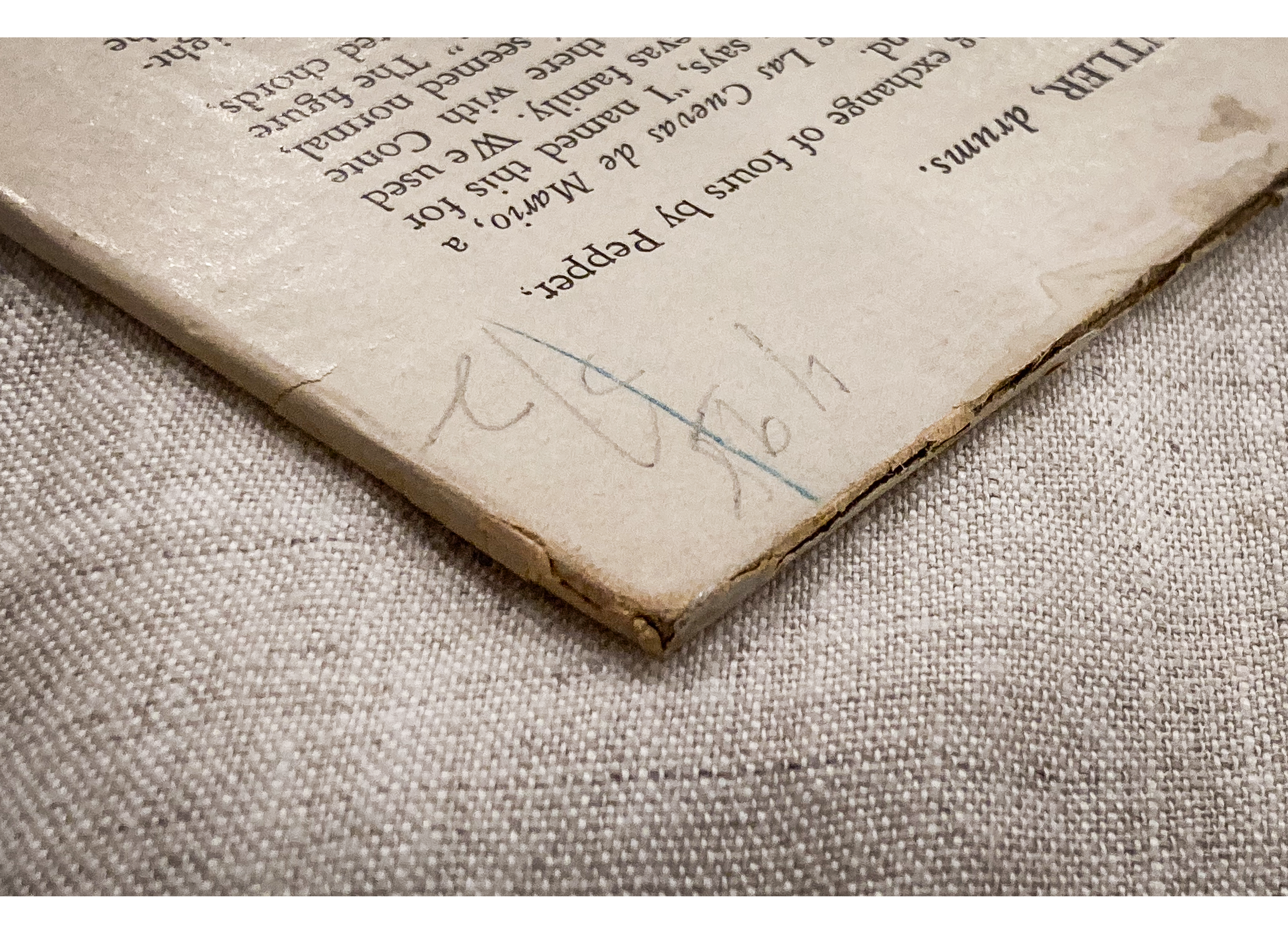
FRONT-WRAP TIP-ON (new titles 1963-1979)
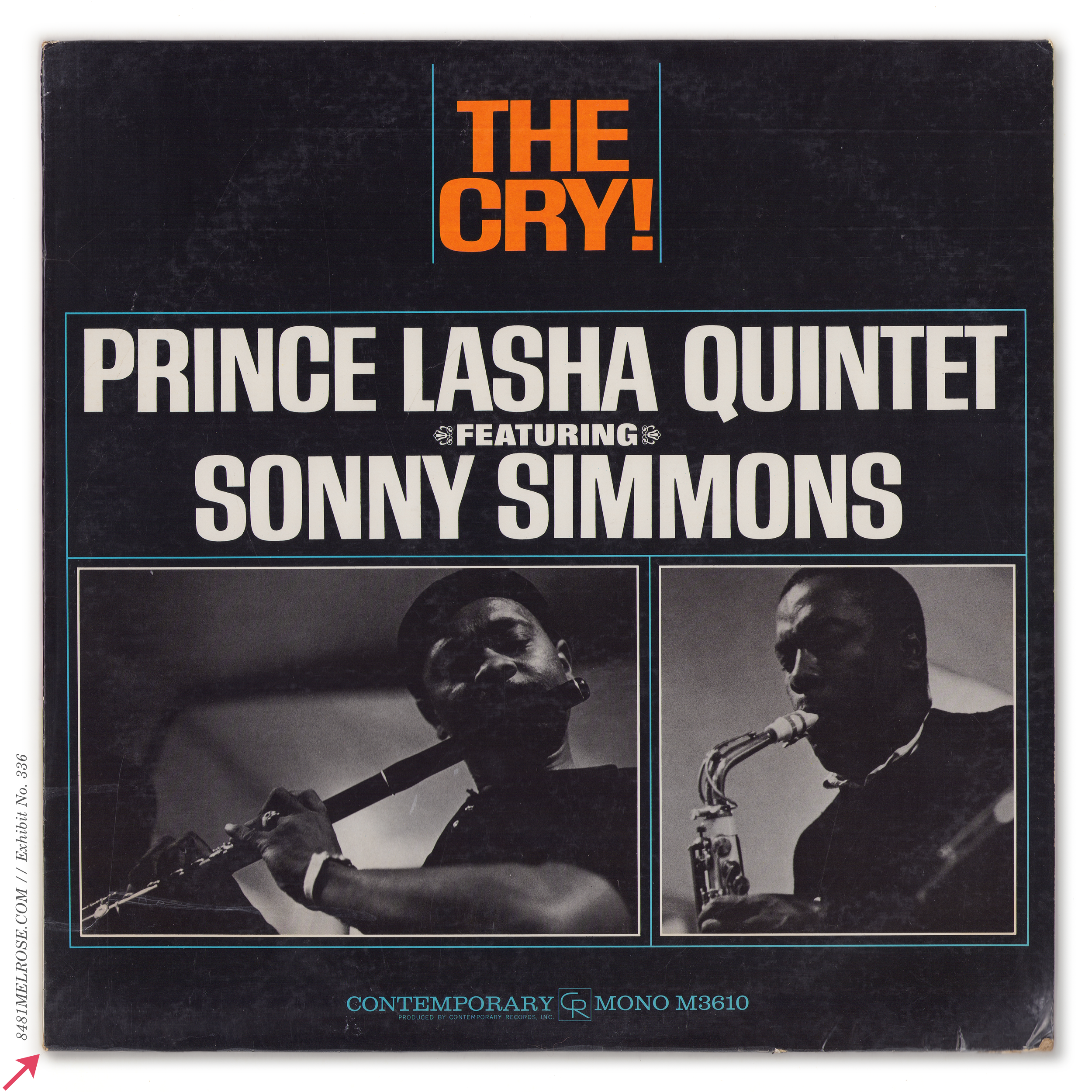



Tip-on construction was standard practice in the US until the late 1970s, when record labels began moving towards the new direct-to-board style. Through a largely automated process, artwork could be printed directly on a thin cardstock blank then folded and glued to create the jacket itself. This was both low-cost and lightweight, a boon to operations. So by the mid-1980s, DTB had taken over and tip-ons were all but gone but from the new release shelves.
Some suppliers continued making them, though. It’s been noted (I forget where) that the Laserdisc market kept jacket printing technology online through the late century when vinyl hit its lowest. So the knowledge and equipment needed to make the “old-style” tip-on survived, and in the 2000s, audiophile labels started bringing them back.
Michael Hobson’s Classic Records might have have been the tip of the spear in the early 2000s, though others followed, including Music Matters, Analogue Productions, Mobile Fidelity, and many more. Today, everybody’s back on-board the tip-on train, even the majors. A premium cost option it remains, but it’s an increasingly expected and valued feature for choicy buyers.
Contemporary’s catalog was largely released during the dominance of the tip-on jacket, but it moved its new releases into direct-to-board jackets starting in 1979.
Direct-to-board (new titles 1979-1982)




Finish, Gloss, and Lamination
Contemporary used a few different finishes on their jackets, depending on era. Frankly I’m not educated on the technicals here or the materials or papers of whatever, nor do I don’t have eyes on the inner workings of printers in the 1950s and 60s. All of which to say, I’m kind of just making up terminology here.
Also this matters very little in terms of identifying anything. Don’t sweat it, this is just for fun.
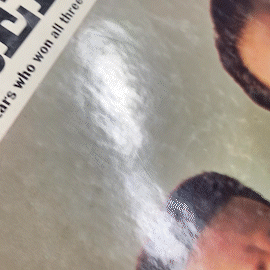
Pebble Gloss (1955 to 1960) This is seen on the earliest Contemporary LPs and all their jackets up to 1960 or so. How to describe it? It’s kinda glossy but also bumpy and… pebbled.
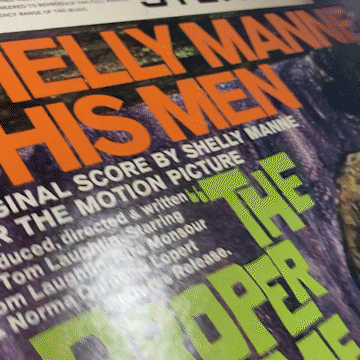
Semi-Gloss (1960 to 1979) Subtly different than the pebble gloss, this has a tighter granular structure of "bumps" which creates a more consistent appearance. Depending on wear, this can appear shiny or not.
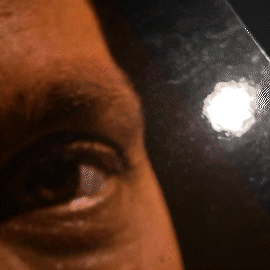
Film Lamination (1962 to 1963) Plastic coating layered atop the print to create a high-gloss reflective finish. You can count the titles on one hand— 3606 Heart & Soul, 3607 Intensity, 3609 My Son the Jazz Drummer, and 3610 The Cry. Why so few, I don’t know.

What about gatefolds?
Great question. When looking at a gatefold, think of it flat, like one super wide jacket with openings at both ends. Then apply the same wraparound rules as we've discussed. The "front artwork" equivalent on a gatefold is a long print which covers both front and rear artwork, as well as the spine. The "rear art" equivalent forms the inner gatefold artwork.
When assembling a tip-on gatefold, one of these two prints has to be the wraparound, and the other the slick. Looking at 3593/4 Live! At the Manne Hole, you can see it conforms to the standard (at the time) of a front slick/rear wraparound construction.
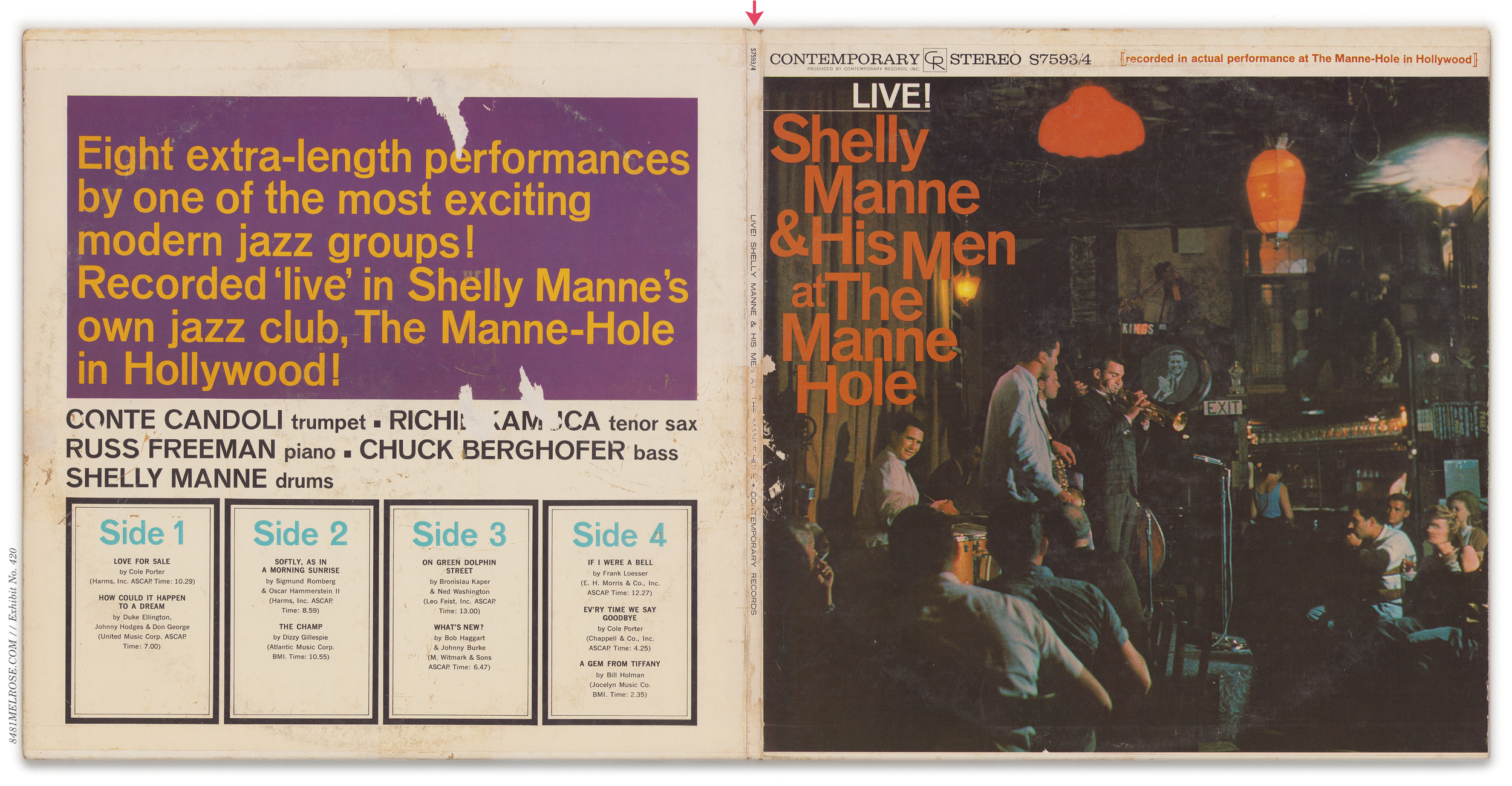

1962 Popular Series title S9006 Sounds Unheard Of! defied the pattern, with a front wraparound gatefold construction (mono variant M5006 a single jacket using rear-wrap construction, more in line with Contemporary’s standard at the time).
S7525/6 Burning Spirits and S7527/8 Blackstone Legacy (both 1971) were front-wrap gatefolds, though by that point Contemporary’s single-jacket releases were front-wrap as well.
There, we've discussed all four Contemporary gatefold releases! There were a few more on Good Time Jazz. Maybe I’ll add those down the road.
Gakubushi jackets
Underneath the outer prints of a tip-on jacket, the jacket blank features its own unique construction which, naturally, has evolved over time. In the 1950s, when the LP jacket was still in its infancy, blanks were constructed by placing sheets of cardboard together and binding their seams using additional strips of material. When fully assembled, these strips remained visible underneath the artwork as raised edges close to the two seams and/or spine.

Gakubushi strip on top or bottom seam.
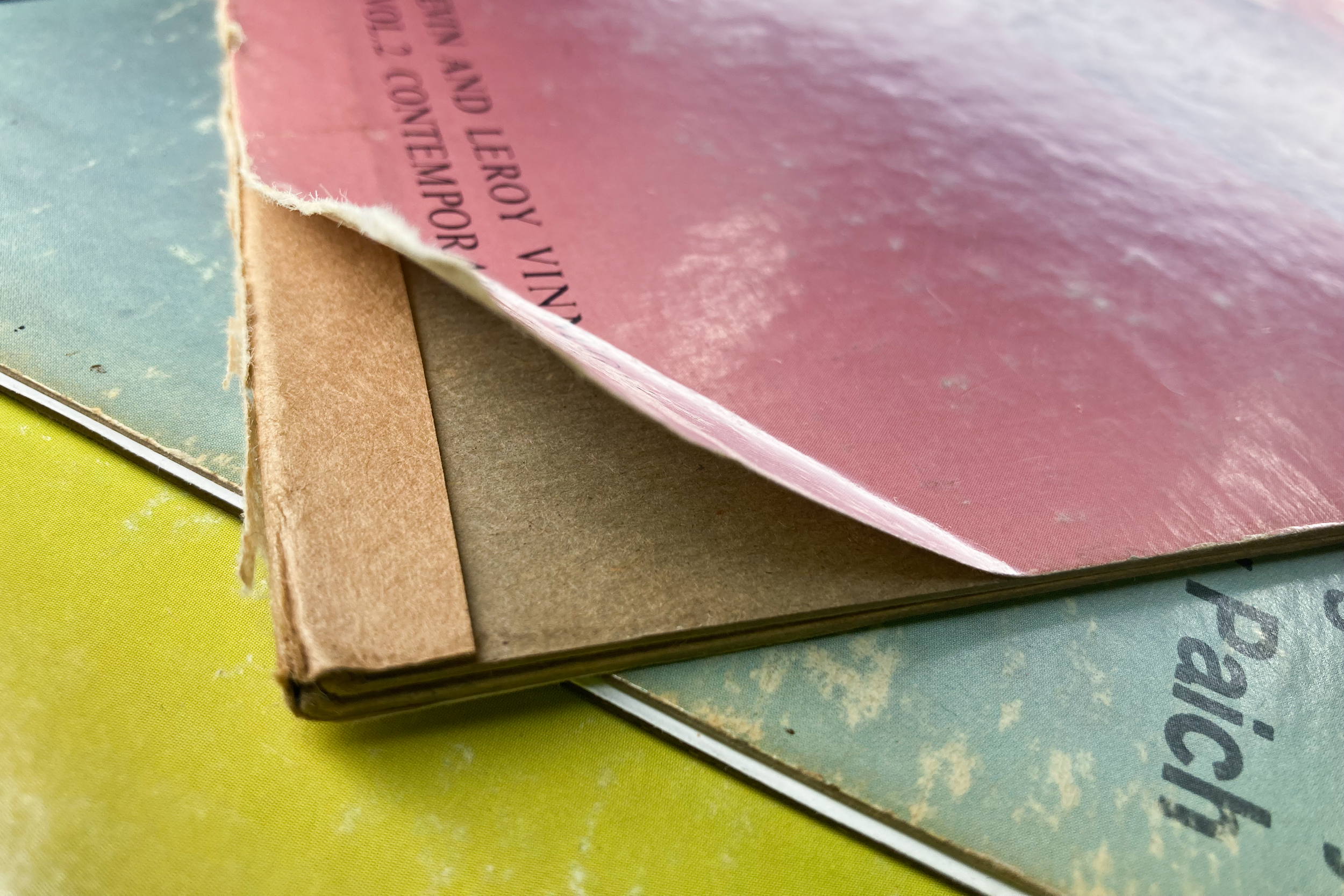
you become naked
These strips could create a kind of raised “frame” around the art. That terminology is, thus, often still used to refer to these old jackets. This can get a bit confusing against the “frame” style of a rear-wraparound tip-on, though. So I prefer to the more specific Japanese term for this blank construction: Gakubushi.
I don’t actually know what this means in Japanese. It might also be spelled kakubushi, apparently. None of that matters. The important bit is that this specific style of construction was only used in the 1950s and the earliest 1960s, and can be a powerful identifier for jackets delivered in that timeframe.
Double Gakubushi (≤1955)
The earliest Contemporary LP jackets (including the 10” LPs from 1953-54) had Gakubushi strips on both top AND bottom seams. I’ll call this Double Gakubushi and it can isolate a jacket’s construction to 1955 or earlier.

Single Gakubushi (1955-1960)
Soon construction was revised, and the blank was assembled with a strip on just one seam. Depending on the final assembler’s choice, this strip could end up as top OR bottom seam of the finished jacket.


The Gakubushi strip is a powerful piece of evidence, in part because it was (probably) non-elective; meaning it was (probably) not a creative decision by the label but a function of their vendors’ practices. So he strip appeared on jackets up to a certain point and not once thereafter.
As a result, this can be a vital feature distinguishing 1950s/60 deliveries from later, otherwise identical, reissues of the same title.
A good example is S7017 Way Out West, on Stereo Records. Its original 1958 delivery was a D1/D1 pressing in a single-Gakubushi jacket. The D1/D1 metal stayed in print for a few years, during which a jacket reprint was needed and new non-Gakubushi units assembled. So the second stereo version of this title is essentially the same as the first, but housed in a non-Gakubushi jacket which points to production in 1960 or later.
So the Gakubushi strip (or lack thereof) is actually the critical identifier separating the two:

Gakubushi jacket

Gakubushi detail

NON-Gaku jacket.

NON-Gakubushi detail
Remember that the Gakubushi strip could be on top OR bottom seam. I’m focusing on the bottom corner on the non-Gaku jacket to match the other picture, but be assured there’s also no strip across the top seam.
Reading the lines:
Gakubushi strips on Rear-wrap jackets
Contemporary switched its new titles from front-wrap to rear-wrap construction in 1959, but single-Gakubushi blank construction persisted deep into 1960. This creates a relatively small window in which you’ll find jackets exhibiting both rear-wrap and Gakubushi construction.
These can be, however, a bit difficult to identify because of the multiple raised edges visible under the front artwork. By virtue of the rear liner print wrapping around front, its foldovers leave three visible edges extending underneath the front slick. These create a kind of “frame” of their own, but are entirely a feature of the wrap style and have nothing to do with the blank’s construction, Gakubushi or no.
Jackets that also use Gakubushi construction (meaning they were assembled between 1959 and 1960), there is a fourth raised line along one of the two seams, closer to the edge than the wraparound line.



And, of course, this Gakubushi strip will also appear on the back of the jacket. (Which is a good rule: the Gakubushi strip will always be visible on both front and back of the jacket.)

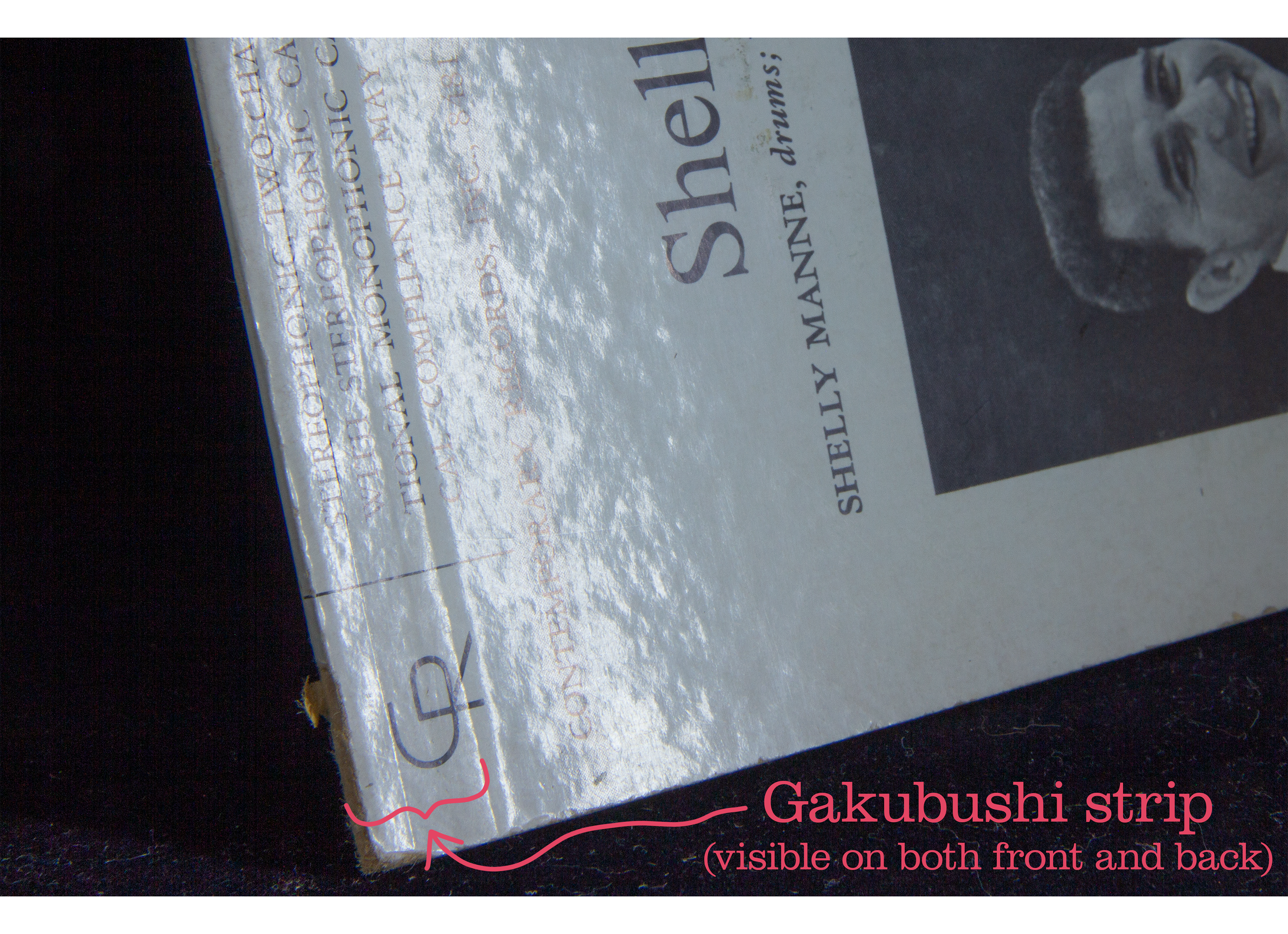
This can be a bit confusing, but once again, this is powerful identifier separating early copies versus late 1960s (or later) reprints or reissues.
Reissue Construction
As Contemporary’s titles were phased (reissued) into different jacket designs over time, their constructions were also subject to change. This was not a universal thing, so attention should really be paid title-to-title… but laying out a few examples will hopefully illustrate the scope of these changes. (Some understanding of Jacket Design is also helpful here.)
We’ve already covered Gakubushi and non-Gakubushi jackets; many titles were originally released in the former and later reprinted (after 1960) as the latter.
There were also many changes made to wraparound style, though this was usually part of a larger redesign. In the early 1960s, several conversions were made from early mono and Stereo Records jackets — which both used front-wrap construction — to 1st Banner design, which used rear-wrap.
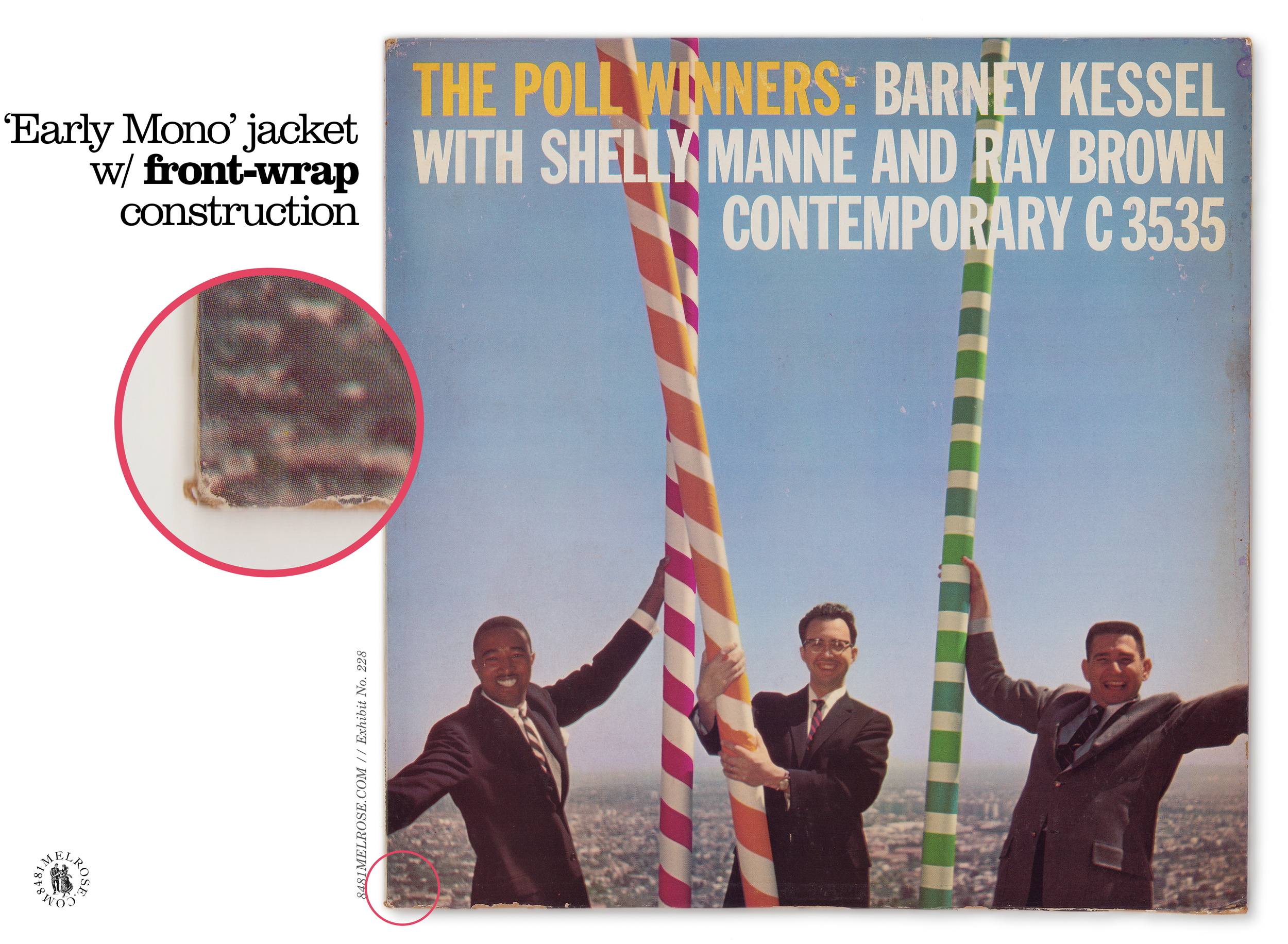

In the late 1960s and early 1970s, several titles were phased into bannerless redesigns which — like new releases in these periods — used front-wrap construction.

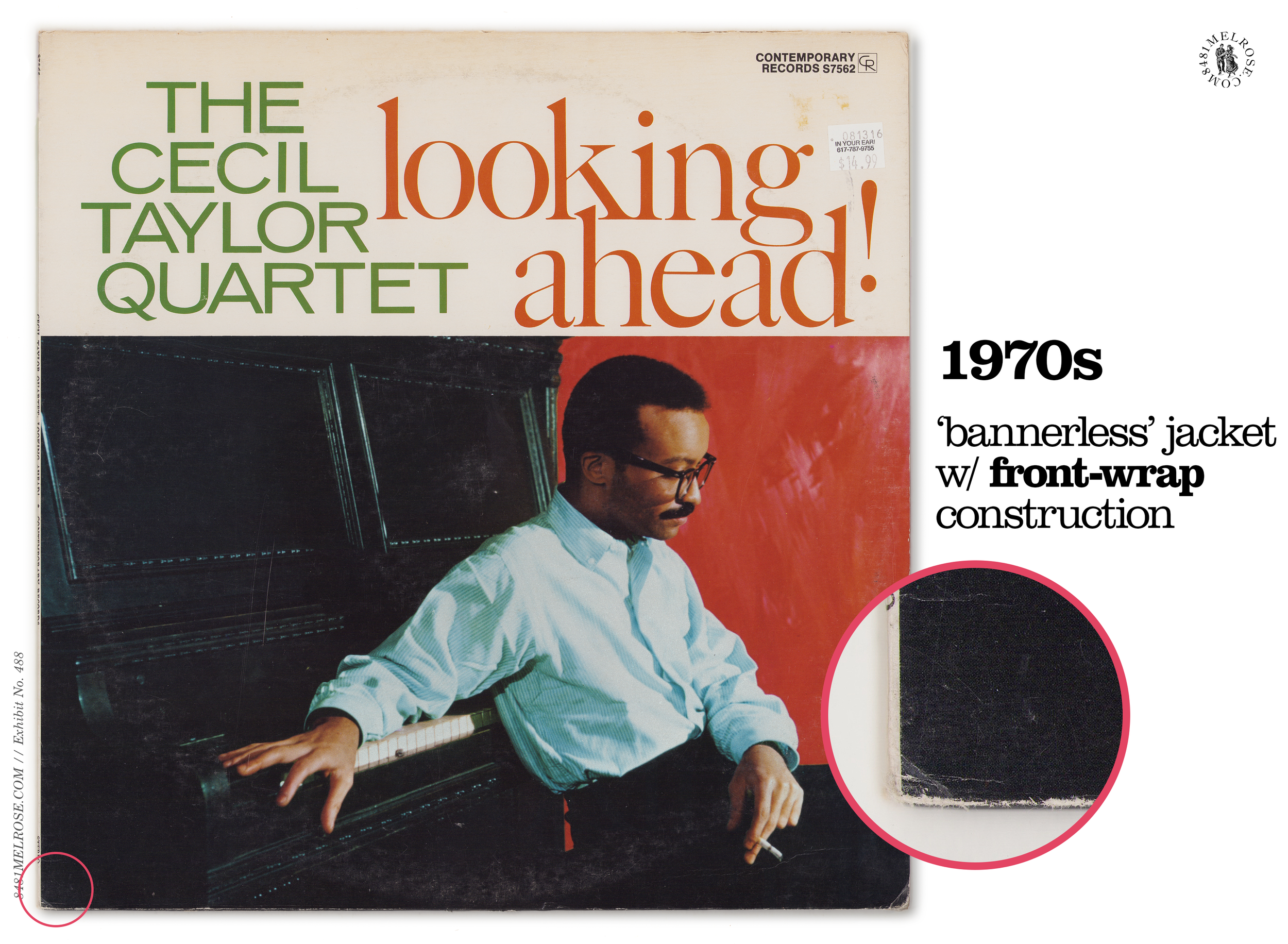
Some new construction conversions were made in the early 1980s, when Contemporary re-created some mixed jackets from the late 60s/early 70s but converted their construction to front-wrap. To do this, they printed a false white border on the wraparound front, as if it were a slick. The results are not bad at all, print quality was still a premium.
Going to borrow some graphics from Jacket Design. We’re deep into overlap territory now.


However - to add some fun complexity - some of these 80s jackets actually used the original rear-wrap construction, with a true front slick. And some titles, like S7543 Pal Joey, were actually released in both construction types:


Direct-to-Board Reissue Jackets
Last and certainly least are conversions made from tip-on to direct-to-board construction. Luckily, these are little more than a footnote among Contemporary reissues.
Two old titles, S7530 Way Out West and S7532 Art Pepper Meets the Rhythm Section, received the DTB treatment around 1979 and later. S7641 Something For Lester had a similar reissue made just a couple years after its initial release.



